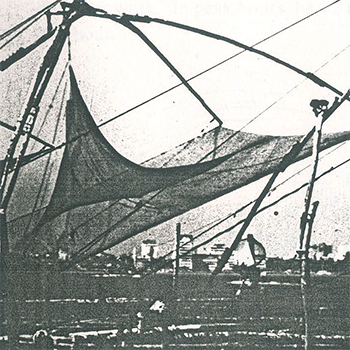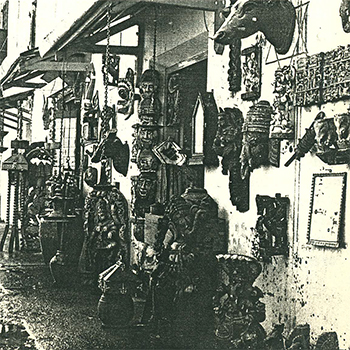The underlying themes of this project are ethnicity and modernisation. The task was to identify a vernacular and historical pocket in a metropolis and study its origin and growth, its religious and cultural roots, as well as the changes due to the onslaught of modernization and how traditional culture has endured or adapted itself to the present times. The study included the place-its sights, smells, images, pulses. architecture, etc., as well as its people—their needs, feelings, desires, and fears. The vernacular pocket and its relationship with the city as a whole, the cross-cultural influence, and possible conflicts and clashes between them were looked into.
The vernacular or historical pocket chosen for the project is the ancient township of Fort Cochin, once a major trading centre but now just a small pocket in the metropolitan city of Cochin, the commercial capital of Kerala. This unique urban settlement was chosen because of the component of plurality, or the existence of multi-ethnic groups that form its population. Unlike most of the vernacular pockets that exist in other cities like Bombay, this pocket is inhabited not by a single community but by different people, with different religious and cultural identities.
The study tries to find if a common denominator exists among all these groups, something that makes it possible to collectively identify the people of this area. Due to the limitations of time, the study was restricted to the four main communities of the area, namely the Christian, Muslim, Hindu, and Anglo-Indian communities. Other minority communities which exist in the area, such as Gujaratis, Konkanis, Jews, Jain, etc., have not been included. Most of these communities are settled in Mattanchery, another historic pocket adjacent to Fort Cochin.
The study includes the documentation of people, places, objects, phenomina, activities, rituals, festivals,streets, buildings etc. A brief outline of the unique urbanisation in Kerala and the differences it has with urbanisation in Kerala and the differences it has with urbanisation in the rest of India is included in the study. A brief write-up on the history and the present scene in Cochin is also included.
The study has not ended with this report. As a part of four similar projects undertaken at the same time at different places, the study has sparked off a quest within ourselves, a thought for human values, and a hope that we shall not only become good designers, but more importantly, better human beings.

